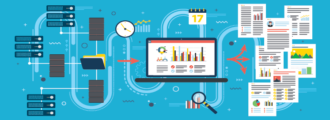Globalization and increased connectivity mean work is happening all the time, from everywhere. And there’s no sign of that slowing down. In fact, IDC predicts mobile workers accounting for nearly 75% of the U.S. workforce by 2020. The same report also notes that the healthcare, manufacturing, retail, and construction industries will see the most mobile growth in the same time frame. Not coincidentally, these time- and schedule-intensive industries make up the majority of Kronos’ user base.
More and more, we’re realizing how important it is to have technology aligned to employee needs and not the other way around. “This means making HR transactions easier, more automatic, and more intelligent,” said HR researcher and analyst Josh Bersin. When having the ability to access information and complete tasks on-the-go, employees feel valued and that their time matters—resulting in a more productive and engaged workforce.
Enter Kronos Workforce Mobile.
Kronos Workforce Mobile lets employees and managers complete critical HR/payroll-relatedfunctions that were once limited to the desktop instance of Workforce Central—punch in/out, view/adjust schedules, request time off, approve timecards and more—all from their phone or mobile device. But, as with any technology, to make it worth the investment user adoption is key.
We’ve outlined 7 steps to a lock-tight Kronos Workforce Mobile implementation and rollout below:
1. Configure Access + Security Settings
Proper configuration is the most important step in any technology implementation. Though the tool has many features, it does have its limitations. It’s important to understand what it can (and can’t) do, as well as what you will or won’t allow from an internal perspective. For example, which modules will have mobile access: Time & Attendance, Advanced Scheduler, Attestation, all of the above? With this information, you can properly configure Kronos Workforce Mobile access and security through firewalls, single sign-on, and geofencing/geosensing.
2. Communicate
Don’t just send an email to staff announcing Kronos Workforce Mobile is now available and be on your way. Start out by highlighting the pain points you’ve heard over time from staff, i.e. not having time to find or use a computer or manually inputting data. Follow up with how Kronos Workforce Mobile will solve those problems. Emphasize the ease and simplicity it will bring to their everyday tasks. Be transparent about what the tool may not be able to do, and clearly lay out the implementation plan/timeline.
3. Conduct a Pilot
Sales brochures, slide decks, and demos are great for showing off product features, but there’s no substitute for firsthand experience. The benefits of conducting a pilot test for Kronos Workforce Mobile implementation are two-fold. First, you’re able to test your configuration, document processes, and uncover issues that may pop up along the way in a smaller, more controlled group. Second, it allows you to build a group of internal supporters. When the time comes for the full-scale rollout, you can count on this group to promote it to others and help the workforce become acclimated with the tool.
4. Gather Feedback
Once the pilot group has had a chance to use Kronos Workforce Mobile and become acclimated with the tool, circle around to gather feedback. What do they like? What do they LOVE? What needs improvement? Were any issues encountered? If possible, tweak the configuration so that improvements can be made based upon concerns. If recommendations are made that the tool cannot accommodate, keep a list of suggestions and share with Kronos.
5. Create Documentation
When new technology rolls out, so do the questions. Be prepared by creating thorough and easy-to-follow Kronos Workforce Mobile documentation such as how-tos, FAQs, and even videos. Because no two Kronos Workforce configurations are the same, it’s important to customize these specifically to your organization. Use screenshots, real-life examples, and internal lingo to drive the information home. Make these resources easy to find and access for future onboarding and employee reference.
6. Training
When you’re ready to launch, set up a fun and interactive Kronos Workforce Mobile training session. If you have varying permissions for different groups, consider breaking those down into smaller, more focused sessions. For those who are able to attend on-site, provide lunch or snacks. For off-site workers, stream the meeting so they can tune in live or watch on-demand later. Incentives are often the key to participation, so make a game out of it by offering small rewards when meeting usage milestones.
7. Follow Up
There will be (more) questions, and there will be unexpected problems. In addition to designating a point person to field these inquiries, set up a survey to gather employee feedback and make improvements as necessary—much like you did during the pilot test. This shows employees you are committed to their happiness and success.




